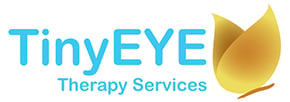They gave each other a smile with a future in it.
~Ring Lardner
Hi Everyone,
This article discusses the variety of personalities that children have and how early educators can help to support communication development. So much learning happens through playing in the preschool environment. Teachers are facilitators of their adventure. A brief overview is suggested below:
Sociable Child
- Frequently initiates interactions
- Responsive to other's initiations
- Draws attention to self
- Sociable Child and Communication Delay: Even if he has limited language or is hard to understand, this child will still seek interactions without hesitation!
Considerations for the Sociable Child
- Try to keep a balance between them amount of interactions you have with the sociable child vs the other children.
- Take note of how effective this child is with his communication. He may talk or interact a lot; but is it age appropriate? As with all developing children, he will benefit from your language stimulation strategies
- Take advantage of the child's enthusiasm about interaction by specifically teaching this child how to use:
- Socially appropriate words and phrases, such as greetings and manners
- Turn-taking with talking and toys
- The proper way to enter an interaction with a peer or teacher
- Always return their initiation face to face. You may be occupied or in a rush; however, turn towards the child; respond even with a facial expression, then kindly SAY that you are going now (teaches topic closure).
- With support, these children can become wonderful peer models.
Reluctant Child
- Seldom initiates
- Eventually responsive - This child will interact once he becomes more comfortable or familiar with a situation or person
- Reluctant Child and Communication Delay: The child may be reluctant to talk because of a speech or language challenge. Also, using social skills may be difficult for her. Possibly the child feels shy and needs plenty of time to feel safe without the pressure to communicate.
Considerations for the Reluctant Child
- Give her time to warm up. It may be a huge developmental step for her to be in a new environment around new people and experiences.
- Consistently be the safe person - the responsive, smiling person who is genuinely interested in her and conscientious about her shyness.
- When she initiates an interaction, respond in a supportive manner so she learns to be brave and comfortable. She will count on an encouraging response.
- Do not over-talk when interacting with her. Children attempt to imitate the adult's model. If your model is too overwhelming, from either a social or a language point of view, you may get no response.
- Try parallel play with her - sit nearby and play with a similar item. Slowly move yourself or your toys closer to her. No need to talk, but try the occasional noises, such as zoom zoom, wow, or oh oh. Watch for her eye contact and use non-verbal communication too. Comment on her toys, such as "You're brushing your baby's hair!" (pause) Comment on your toys, such as "My baby is sleepy." (pause) Make an inquiry, such as "My baby is hungry. I wonder where her bottle is?" Try sitting with her each day, while increasing your interaction attempt each day.
- Do not force talking - Do not withhold anything from a reluctant talker for not talking. Then, talking becomes this scary thing that makes her not get a cookie or have a turn. As her sense of security and/or social and language skills increase, she will learn that talking is a useful thing that helps to get a cookie or have a turn!
- Find another way that she can communicate. At first, her eye gaze towards an item or a head nod may be her way of showing interest. Pointing or reaching also count. To slowly encourage talking:
-
- Give her two choices in front of her. Ask her which one she wants. She may point to her preference. You say, "You want the oatmeal cookie - yummy!"
- Try to get a laugh from her by doing something that is just silly, such as using an object the wrong way, dropping some items without knowing it, and having trouble doing something.
-
- Each day, welcome and say good bye to the child with a wave. The child is more likely to imitate a gesture than a word.
- Ask a question that requires a yes or no answer so she can nod her head. If she does not respond, try having her point to an option. Accept no response and casually move on if necessary.
- Include her in play by giving her a role to play or showing her the way.
A great step towards talking is when the child feels comfortable enough to make non-verbal sounds in your space. Bring in musical instruments for blowing, banging, or ringing. Do songs and movement activities so she can participate by movement.
-
- Put her and a social peer together at an activity that does not require a lot of interacting, like the Play-Doh table. Next try an activity that requires silent turn taking, such as taking turns putting in pieces of a puzzle. Try a partnership activity so they can work together to finish a task, such as washing some toys for you or mixing up a recipe. Working in pairs rather than a larger group may be less demanding and less socially overwhelming for a reluctant talker.
- Involve the child in circle time by asking her to hold a prop, turn a page, or hand out items.
-
- The kids may be running a hair dressing salon - You bring her over, knock on the door, and tell the workers that their new shampoo person has arrived for her first day of work. She had been working in Disney World on Cinderella and Ariel's hair! (Build her up to raise her social status with the peers.)
- Bring her to the water table and ask a peer to show how she uses the strainer to make a waterfall. Get the child interested. Give the child some tools to use. Eventually, she will be brave enough to ask for a tool from a peer. For now, just get her next to a peer where interaction can grow.
- Go outside to play - the activities like sliding, swinging, and jumping do not demand a lot of social or language skills, but they help a reluctant child be a part of a group while having fun. Also, more non-verbal behaviour will occur outside.
Own Agenda
- Initiates when he needs something
- Not usually responsive - Not interested in other's attempts at interaction; however, this child will engage in some social activities when he feels like it. Does not care to play with others.
- Own Agenda Child and Communication Delay: If this conversation style persists, the child may have delayed social or language skills. On the other hand, this child may be very content to be his own best friend.
Considerations for the Own Agenda
- Since this child does not care to initiate or engage in interactions, she does not receive as much social, play, or language practice.
- Some children are happy to entertain themselves, such as the Own Agenda child. However it is important to ensure that this child is using age appropriate communication and play skills.
- Try to engage this child by:
- Moving closer into her play space,
- Playing "wrong" such as doing something backwards,
- Making an interesting sound for your toy - Watch for him to look at you, and then repeat the action or noise.
- To encourage him to ask for help:
- Keep a favourite toy in sight but out of reach
- Tightly attach a lid on a desirable item
- Once he asks for help, try to engage in a turn taking exchange.
Passive Child
- Rarely initiates
- Rarely responds
- Little or no non-verbal communication, such as a smile or eye gaze, to indicate that he is interested in the environment
- Passive Child and Communication Delay: A child who consistently demonstrates this style may have a developmental delay that spreads further than speech and language.
Considerations for the Passive Child
- A child who shows no interest in his surroundings will not be able to learn from his interactions with it.
- Take into consideration any other reasons for this style, such as depression, medication, developmental delay, or illness.
- Continue to provide sensory experiences for this child, as appropriate:
http://tinyeye.wordpress.com/2009/02/19/tinyeye-considering-children-with-disabilities/
- Consult a professional, such as a speech-language pathologists
If a school district in your area needs Speech-Language Pathologists, please let me know by email as we at TinyEYE can help!


Marnee Brick, MSc
Speech-Language Pathologist and Director of Speech Therapy
TinyEYE Therapy Services (Speech Therapy Telepractice)
http://www.TinyEYE.com-Online Speech Therapy Telepractice
School Districts: Recruiting Speech-Language Pathologists? Job Boards not working? Click this link!


